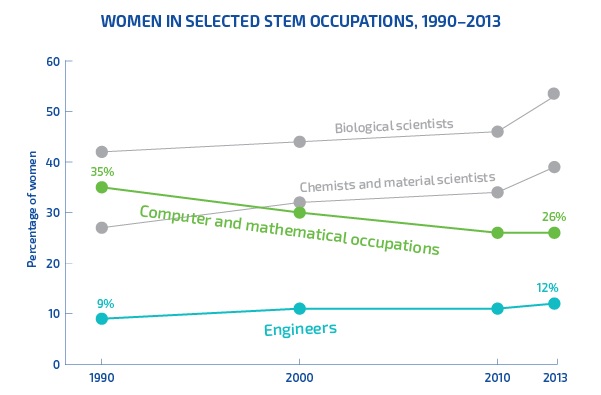March is Women’s History Month in the US, the UK and Australia, a time to honour women’s sometimes underrated contributions to society. According to the US National Women’s History Museum, Women’s History Month started in 1978 as a local “Women’s History Week” celebration in California, with organizers selecting the week to correspond with the March 8 International Women’s Day. The US Congress in 1987 passed Public Law 100–9 designating March as the Women’s History Month.
The past few decades have seen a steady increase in the number of women studying and excelling in the STEM fields. But this is not so in computer science — the number of women studying or pursuing a career in computer science has been decreasing since around 1990. As of 2015, women made up only 18% of computer science majors in the US — a decline from a high of 37% in 1984, according to a National Academies of Sciences, Engineering, and Medicine 2018 report. The AI Now Institute last year estimated that women currently make up 24.4% of the computer science workforce and receive median salaries that are only 66% of the salaries of their male counterparts.
A report by the National Center for Women in Information Technology found out that nearly half the women who go into technology eventually leave the field — more than double the percentage of men who leave.

Source: Solving the Equation: The Variables for Women’s Success in Engineering and Computing report (2015), American Association of University Women
The gender imbalance among machine learning researchers therefore is hardly surprising. The AI Now Institute warned in a 2019 report that the AI industry needs to “acknowledge the gravity of its diversity problem and admit that existing methods have failed to contend with the uneven distribution of power.” It’s argued that the lack of gender diversity also creates the risk — as an increasing body of research in recent years has suggested — that AI systems may perpetuate existing forms of structural inequality and cause harm to underrepresented groups.
As part of this month’s Women in AI special project, Synced takes a look at some key numbers (and trends) on gender gaps in the AI industry and discusses possible ways to address the issue.
To continue reading this article, click here.
You must be logged in to post a comment.
Pingback: Exploring Gender Imbalance in AI: Numbers, Trends, and Discussions | IAM Network